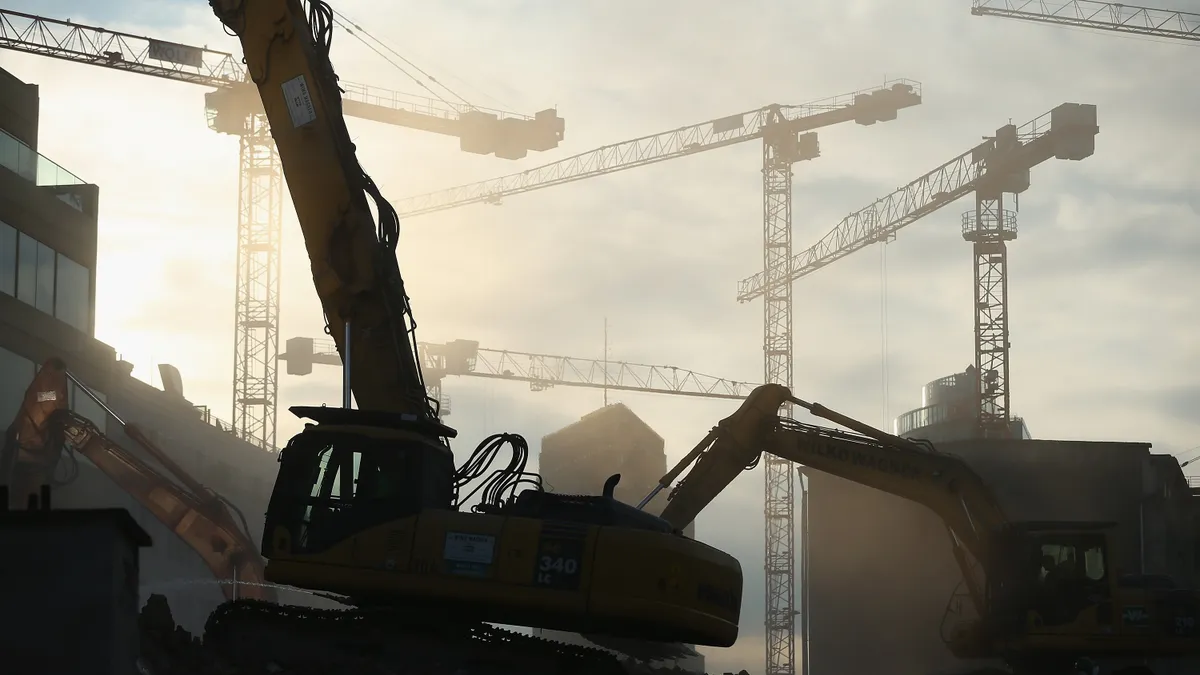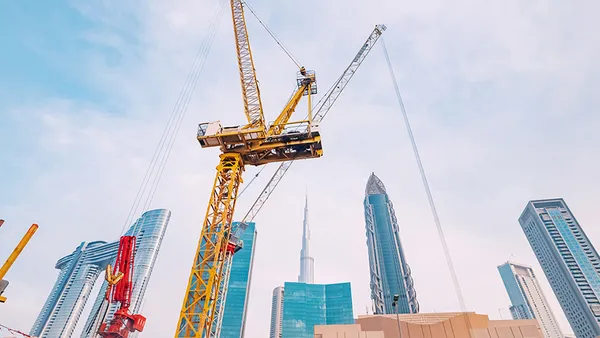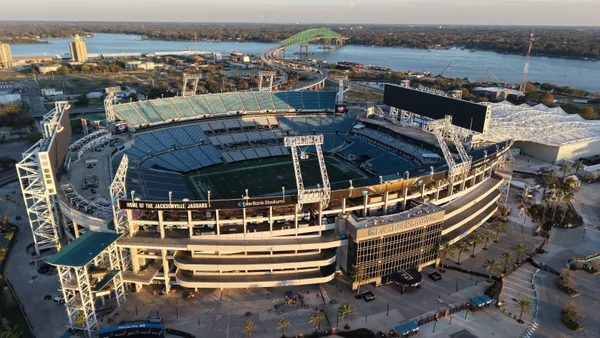Over the past year, supply chain snarls and pandemic-related uncertainty have continued to affect the construction industry, leading to high materials costs, delays and difficulty finding skilled labor. It's not all bad news though: some costs remained relatively flat, the impact of COVID-19 is easing in much of the U.S. and passage of the Infrastructure Investment and Jobs Act (IIJA) will infuse federal money for a variety of projects.
The following graphs illustrate some of the challenges contractors have faced, and break down the machinations behind key pain points. All data displayed is from Sept. 2020-Sept. 2021, unless otherwise specified.
While materials prices have generally jumped in the past year, steel in particular shot up, at a rate not seen in about a century. According to the Wall Street Journal, steel prices have increased due to high demand and Trump-era tariffs. Contributing to the problem are supply chain issues, early-pandemic steel mill shutdowns and consolidation in the industry (the two main producers are loath to increase supply, which would bring down prices), according to Fortune.
Some good news may be on the horizon: the U.S. agreed to lift tariffs on steel and aluminum imports from Europe starting Dec. 1 and recently announced trade talks with Japan to do the same.
The item that saw the second-highest price increase was diesel fuel, which is now at a seven-year high. That's due to higher demand with Americans driving more as the pandemic eases, as well as lower domestic and international supply, according to Business Insider. High energy costs are a key driver of inflation, per The Washington Post.
To make matters more challenging, many subcontractors' project needs are heavily weighted toward materials that have risen even more in price than the overall Producer Price Index (PPI) for inputs, according to analysis from the Associated General Contractors of America.
After climbing precipitously last year and reaching a record high in May 2020, lumber is the one material that slumped in price during this period. However, after hitting a low in August, prices jumped around but drifted upward. The U.S. has yet to renegotiate a softwood lumber deal with Canada, as home builders in particular have been pushing the Biden administration to do, and experts expect the volatility to continue.
While most construction-related services increased moderately in cost, transportation of freight shot up by 15%. That was due to strong demand, high fuel prices and an insufficient amount of drivers in the past year. Experts are expecting the trucking industry to remain hot in the one ahead, according to Transport Dive.
Despite the industry's much-decried labor shortage, construction wages have only increased moderately in the past year, and have not kept pace with salaries overall. Nor have construction wages kept place with inflation, which rose 6.2% in October compared to the same period last year, according to Bureau of Labor Statistics (BLS) data.
That's the highest one-year increase since 1990, per BLS, and indicates that construction workers are effectively receiving a pay cut. As contractors look to solve their labor shortage, right-sizing wages could be an important recruiting and retention strategy.
Spending on roads and highways, sewer and water supply all increased slightly in the past year, but most other construction spending fell. Dollars for public safety (such as fire stations and police buildings) and lodging decreased the most, closely followed by conservation and religious projects.
Relatedly, backlog slumped during the pandemic according to Associated Builders and Contractors, though it did increase in early- and mid-2021 before falling again in August and September. Nonetheless, industry executives have expressed optimism about the months ahead, in particular those who work on infrastructure. The recently-signed federal infrastructure package will increase funds for road, dam, rail and other projects.
As materials prices have shot up in the past year, the bid price of construction projects has not kept pace with the cost it actually takes to build them — meaning at times, contractors are losing money. Past materials price escalations in the early- and mid-2000s were a blow to contractors, who generally were not able to pass along higher project costs for an extended period, according to AGC construction inflation analysis.
That's happening currently: contractors are often forced to absorb cost increases in order to win projects, AGC found. (Carefully-worded contracts can, however, help protect builders.) There was some good news in October though: bid prices shot up by over 7%. Nonetheless, it's likely that inflation will continue to be a significant issue for the industry in the year ahead.














